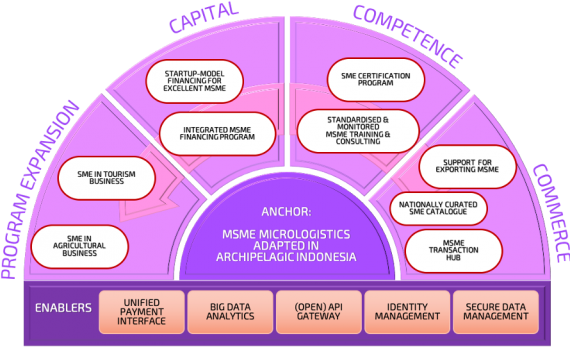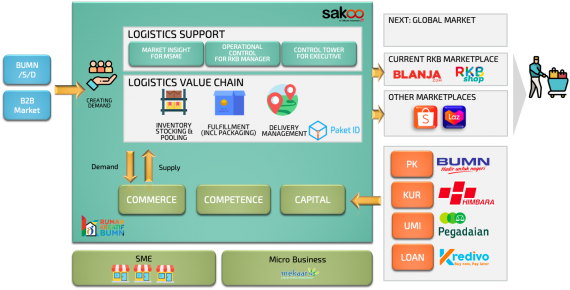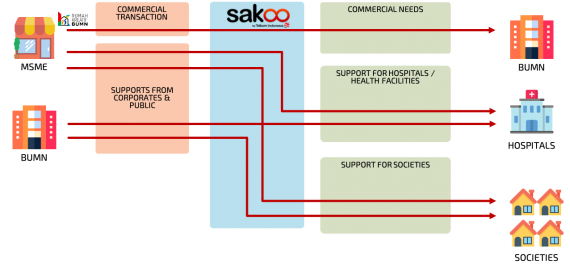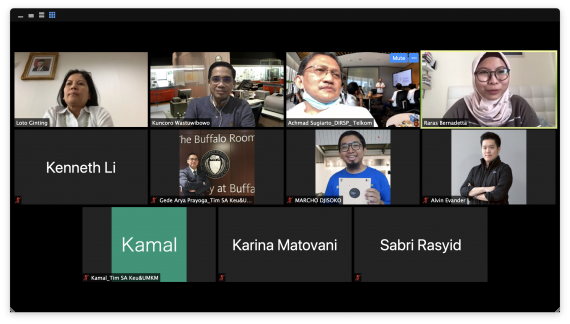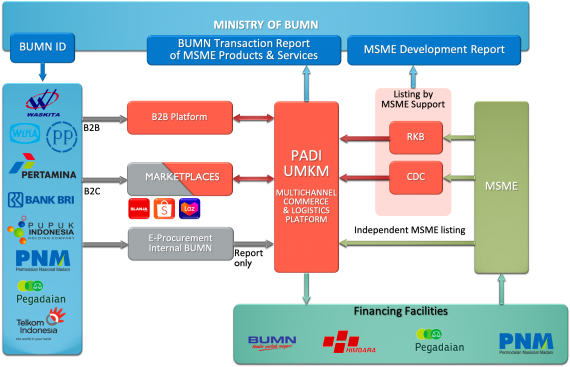Now about the MSME ecosystem.
The Govt has repeatedly mentioned that we have 65 million MSMEs in Indonesia, and that the MSME are the very backbone of the national economy: they contribute ±61% of GDP and provide ±120 million jobs, nearly the entire labour force. Yet for all their importance, they are treated with something close to neglect by national financial system. While state banks happily court the large corporates and property developers, the millions of small firms that keep the country running receive less than 20% of their credit. And when the MSME secure a loan, they pay dearly for it, at interest rates of 12%–18% per year, even when BI’s rate rests at 5%. A curious kind of financial apartheid: the majority does the heavy lifting, the minority enjoys the cheap capital.
The Minister of Finance, to add insult to injury, has been swifter at taxing MSME than at financing them. Efforts to broaden the tax base focus on micro firms while the big players continue to enjoy exemptions, incentives, and creative loopholes. Programs intended to strengthen domestic small industry, remain piecemeal, minimally supported, and shifted instead to use the MSME data for taxing. The rhetoric is that MSMEs are the backbone of the economy; the practice is that they are milked like docile cows for easy revenue, without being fed the credit that might fatten them into global competitors.

There is surely the KUR program the Govt always mentions, which offers subsidised credit to small businesses. In H1/2025, around Rp 133T was disbursed to some 2.3 million borrowers. That number is impressive on its own, yet it reaches only 3% or 4% of the total MSME population. And the balance is skewed beyond recognition: nearly 1.9 million of those borrowers were micro firms, a modest 159 thousand were small firms, and a mere 16 thousand were so-called ultra-micro. Medium-sized enterprises are excluded entirely, with the optimistic expectation that they will graduate to commercial loans — a graduation ceremony that only rarely takes place.
KUR is not nothing, but neither is it enough. What Indonesia needs is a breakthrough: a national credit guarantee scheme that shares risks between the state and the banks and, in doing so, brings down lending rates while opening the doors of finance to millions who are currently shut out. The idea is simple. If a portion of loans in a defined portfolio go bad, the state-backed guarantor pays part of the loss. With that safety net in place, banks can lend at lower rates and to a wider circle of borrowers.
This is not some wild experiment. South Korea’s KODIT has long guaranteed up to 85% of SME loans; Japan’s municipal credit guarantee corporations have done the same for decades, usually at 80% coverage. The US Small Business Administration runs its own guarantees on 75% to 85% of small business loans. Europe operates portfolio schemes through InvestEU. The lesson is consistent: when governments shoulder part of the risk, banks lend more, charge less, and the fiscal costs remain entirely manageable.
What would this look like in Indonesia? Imagine a scheme supporting 1.5 million loans per year, with an average size of Rp 150 million, creating an annual portfolio of roughly Rp 225T. The guarantor would cover 40% of first losses, capped at 10% of the portfolio to prevent excess. Banks would pay a fee of 1.8% p.a., softened by a small state subsidy of 0.4%. In practice, this would mean loans to small businesses priced at about 3.5% lower than they are today. The expected fiscal cost to the state would be about Rp 2.3T per year, with a guarantor capital buffer of roughly Rp 8T. For the price of a single prestige infrastructure project, the government could transform access to finance for millions of enterprises.
The institutions are already there. Jamkrindo and Askrindo could act as front-line guarantors just like KUR. PII could serve as a backstop. Multilateral lenders such as the World Bank, ADB, or IsDB could add further insurance, while state and private banks would originate the loans. Oversight and enforcement would fall to the Ministry of Finance, Bank Indonesia, and the Financial Services Authority (OJK), with the Ministry of MSME ensuring that outreach truly extends beyond Java and into women-owned and first-time borrowers.
The expected results could be far from trivial. With 1.5 million new loans guaranteed each year, more small firms would cross into the formal economy. Average borrowing rates would fall from the current 12% to 15% into the single digits. Employment would grow by perhaps one million jobs a year, as enterprises invest and expand. GDP growth would tick upward by at least 0.5%. And because borrowers under the scheme must be formally registered, the tax base would widen, meaning the program could ultimately pay for itself.
Indonesia cannot hope to reach sustained 6%–7% growth while its entrepreneurs are trapped in a high-cost credit desert. This lending guarantee program would provide them with the rain they need. Alongside, the state should push forward with digital credit scoring, drawing on tax, e-commerce, and utility data; it should open the way for SME bonds and securitisation; and it should modernise collateral laws so that machinery, vehicles, and inventory can be pledged as security, not only land and buildings.
Without accelarating these programs, Indonesia risks remaining a dual economy: one world of corporates enjoying cheap capital and tax incentives, and another of millions of MSMEs left to carry the country on their backs while paying through the nose for the privilege.


